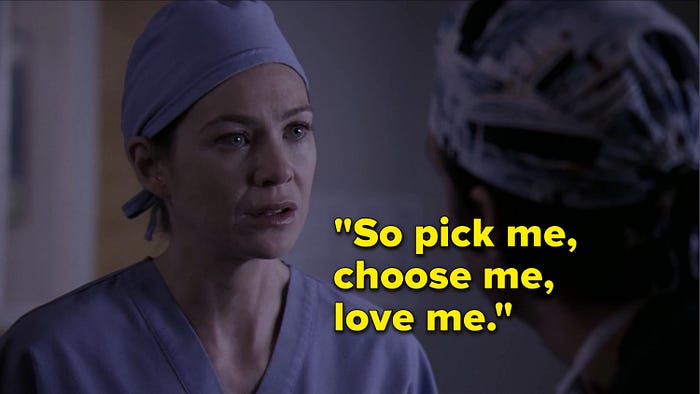How Insecure Attachment Style Is Ruining Your Life
Let’s start with the fact that,
Humans are hard work.
And yesterday I got to know why.
I discovered different types of attachment issues. And was SHOCKED to know that I relate SO FREAKING MUCH with the crazy ones.
Psychology seems so fun right now because I am finally finding logical answers to the shit I have been doing for years. Like, I am not crazy, guys. It’s just that my attachment style is fucked up. And if you relate even a little bit to it, you should read this article and then watch tons of videos on YouTube to fix it. This article is just an introduction to the big, wide, and scary world of attachment issues.
So, the first one is — The Secure Attachment Style
It’s a little ironic that I start with this.
Okay, change of plans. First, I’ll discuss what anxious and avoidant attachment styles are, then we’ll move on to the fearful and secure ones. Because the last 2 are related to the first 2.
When a person has an Anxious Attachment Style, he/she tends to be overly needy. These people crave intimacy but worry that other people don’t want to be with them.
People with anxious or ambivalent attachment styles constantly need love, attention, reassurance, and support. This is because their early experiences as a child made them believe that people are always going to disappoint them by abandonment or something else. So they always need to make sure that it doesn’t happen.
And when a child grows up feeling that way, the adult version of them has this worldview that people can leave anytime. But they aren’t the avoidant type who think— “People? Who needs them? I am good on my own”. The anxious type enjoys company and gets a little clingy and desperate to keep people in their lives. Which is probably what drives them away. Because, you gotta know when to stop, right? There has to be a right balance between the amount of space and attention you give to other people.
Do you know who is best at maintaining this balance? Yup, you guessed it right! The Secure Ones.
Everyone needs love, attention, and a little bit of space, right? The anxious ones think from their heart. They are like — OMG, I can’t live without them. I need their love and attention. To that person, it doesn’t matter if you have made it perfectly clear that you don’t like them. They will do whatever they can to get your attention.

The Avoidant Attachment Style on the other hand listens to their brain. They are very logical and overly independent. Their professional lives are always top-notch, but they struggle to maintain good personal relationships.
And you know what the biggest nightmare of an avoidant person is? The anxious one! (I so badly want to add a crying emoji here, but I don’t know how to do that with my laptop). Just think of the situation. A person who believes they don’t need anyone has to deal with a person who is like — Pick me, choose me, love me!
You have no idea how fast the avoidant ones will run away because the only thing they fear is intimacy. I mean, they will achieve professional heights and do the unthinkable, but when it comes to getting close to another person, either platonically or romantically — THEY WILL RUN!
In my opinion, these two styles are comparatively easier to understand than the fearful ones. Because OH MY GOD! Things get messier here. (When I say, OMG — think of Janice from F.R.I.E.N.D.S)

The anxious and avoidant is easy. One thinks from the heart, and the other thinks from the brain. But the Fearful Avoidant ones, ugh. In the morning they will think from the brain and at night they will think from the heart.
They belong to the Disorganized Attachment category. Because they confuse the hell out of other people and themselves if they don’t know, they have a fearful, avoidant attachment style.
So, this one will take time to explain.
When a fearful avoidant feels lonely, their anxious side gets triggered. That’s when they feel utter desperation for love and attention. So now they will put themselves out there and do whatever they can to get the attention they so desperately need. Once they have it, they’ll obsess with the person. They’ll talk to them all the time and become all clingy and cute and whatnot. But as soon as they will feel like a connection is getting developed, or the other person is getting attached, their avoidant side will get triggered. Now they will end up ghosting the person and will come back again when their anxious side gets triggered.

It’s a vicious cycle, I must say.
Fearful avoidant attachment style develops when as a child your caregivers show inconsistent behaviors. You don’t know whether to rely on them or protect yourself from them. Because of this, that child will develop this worldview that yes, people are good, and we can rely on them, but not too much. We have to always keep our guard up because they can lose their shit anytime.
This can also happen when your parents are divorced. When your entire life is disorganized, why can’t your attachment style be?
It’s the reason why fearful avoidants are always on their toes. One wrong move by the other person and their brain says DANGER and they are out. Their cut-off game is so strong.
Okay, enough about the fearful-avoidant. Now it’s time to talk about the Secure Attachment Style.
I don’t think I can explain the secure one without explaining the other 3.
Anxiously attached people always think from their heart and follow their emotions. See, everyone has access to all their features. Whether it is being emotional or logical. However, what a person chooses to show as an adult is shaped by how their worldview formed as a child. So it’s not that they can’t be logical, it’s just that they choose not to be. Because that’s what worked for them as a child. But it isn’t working now, that’s why all the mess is happening. Do you get it?
The same goes for the avoidant ones. They lean more towards a dismissive and avoidant side. Not because they like it. But because that’s what worked for them as a child.
(All these patterns of either being too emotional or logical are unconscious habits that were formed early in their life. People don’t know that there is a choice. They are not even aware of their patterns)
The fearful ones can lean toward both clingy and dismissive sides. But on the two very extreme ends. One good thing about fearful avoidants is that they have access to both sides. It’s just that they only listen to one at a time, and that too in extreme.
If they somehow learn to coordinate with both the brain and the heart in a perfectly right amount, they will become the secure ones.
Secure people lean towards both sides on a limited and healthy amount. When a securely attached person doesn’t get their needs met, they don’t show tantrums or extreme behaviors. They’ll simply communicate. BECAUSE THAT’S WHAT WORKED FOR THEM AS A CHILD! (Now I am realizing the importance of parenthood).
When you are with a secure person, and you make a mistake, they’ll not completely remove you from their life. What they’ll do then? Yes, you guessed it right! Communicate.
So that’s it for today. This was just an introduction to the different types of attachment styles. There is so, so much more that needs to be talked about. I am still researching and learning about the attachment theory. If you want to know more about it, let me know in the comments section. Till then, bye-bye. Have a good day!
Okay, one last thing — Remember that all these insecurely attached styles are not a lifetime sentence. They can be fixed. Only if you are willing to do it.
